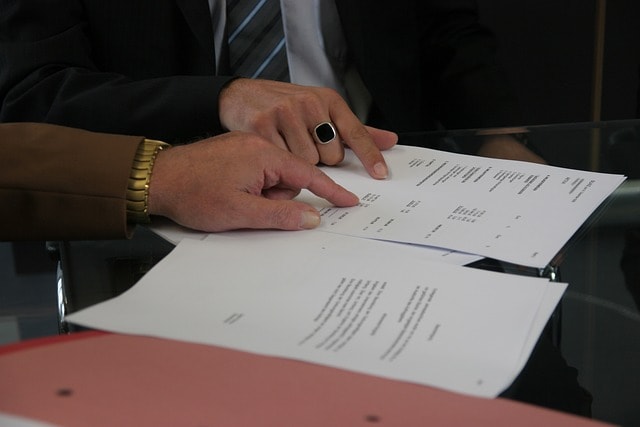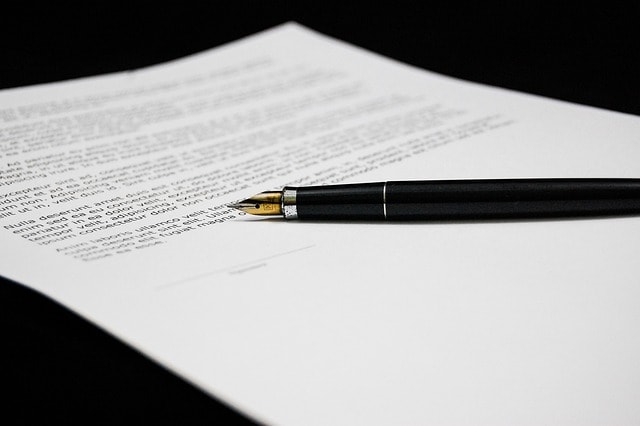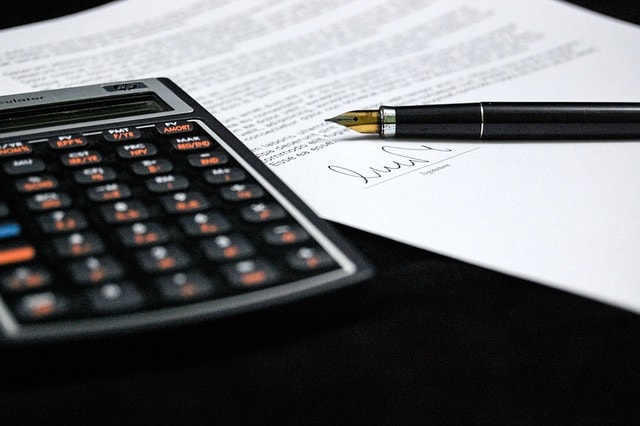Expert Guide to Creating an Agreement for Lease

Introduction
Welcome to the comprehensive guide on creating a lease agreement. Whether you’re a first-time landlord or an experienced property manager, understanding the intricacies of lease agreements is crucial for protecting your interests and ensuring a smooth rental experience. In today’s dynamic real estate market, a well-crafted lease agreement is the foundation for a positive landlord-tenant relationship.
This guide will walk you through the essential components of a lease agreement, from basic definitions to advanced clauses. We’ll explore the legal considerations, best practices, and potential pitfalls to avoid. By the end of this guide, you’ll be equipped with the knowledge to create a robust, fair, and legally compliant lease agreement.
Let’s dive into the world of lease agreements and unlock the secrets to successful property management!
Understanding Lease Agreements

What is a Lease Agreement?
A rental lease agreement is a legally binding contract between a landlord and tenant that defines the conditions and terms of renting a property. This document serves as the cornerstone of the landlord-tenant relationship, outlining the rights and responsibilities of both parties.
Key elements of a rental lease agreement typically include:
- The identities of the landlord and tenant(s)
- Property description and address
- Lease term (duration of the tenancy)
- Rent amount and payment terms
- Security deposit details
- Maintenance responsibilities
- Rules and regulations for property use
It’s important to note that while professional assistance can be valuable, individuals can create their own rental lease agreement. Whether for residential or commercial properties, a well-crafted rental lease agreement clarifies and protects all parties involved.
Lease Agreement vs. Rental Agreement
While often used interchangeably, lease agreements and rental agreements can have distinct meanings depending on the jurisdiction:
- Lease Agreement: Generally a more formal, long-term document (typically 6 months to a year or more) that outlines detailed tenancy terms.
- Rental Agreement: Often refers to a shorter-term arrangement (month-to-month) with more basic terms.
Understanding these distinctions is crucial when deciding which type of agreement best suits your needs.
Types of Lease Agreements

Residential Lease Agreements
Residential lease agreements are used for properties intended for living purposes, such as:
- Apartments
- Houses
- Condos
- Townhouses
- Mobile homes
These agreements should cover all aspects of living in the property, including rules about noise, pets, and property alterations. A residential lease agreement is essential when renting a residential property to define the rental terms and duration.
Commercial Lease Agreements
Commercial lease agreements are used for business properties, including:
- Office buildings
- Retail spaces
- Restaurants
- Warehouses
- Industrial facilities
These agreements often include more complex terms related to business operations, such as permitted use of the property, signage rights, and common area maintenance fees.
Creating a Lease Agreement

Preparing the Rental Unit and Tenant Application
Before drafting a lease agreement, it’s essential to:
- Prepare the rental unit:
- Thoroughly clean the property
- Make necessary repairs
- Ensure all appliances are in working order
- Document the property’s condition with photos or videos
- Create a comprehensive tenant application form:
- Include fields for personal information
- Request employment history
- Ask for rental history
- Obtain permission for credit and background checks
Managing interactions and agreements with a prospective tenant is crucial before finalizing the lease.
A well-prepared property and thorough application process set the stage for a positive rental experience.
Screening Tenants and Negotiating the Lease
Effective tenant screening is crucial for finding reliable renters. Consider the following steps:
- Review the completed application
- Verify employment and income
- Check references from previous landlords
- Run credit and background checks
- Conduct an in-person or virtual interview
Once you’ve selected a tenant, it’s time to negotiate the lease terms. Be prepared to discuss:
- Monthly rent amount
- Lease Duration
- Security deposit
- Tenant’s security deposit
- Pet policies
- Maintenance responsibilities
- Any special requests or considerations
Remember, clear communication during this stage can prevent misunderstandings later.
Use a Template
Using a lease agreement template can streamline the creation process and ensure you don’t overlook important details. Benefits of using a template include:
- Comprehensive coverage of essential clauses
- Time-saving starting point
- Reduced risk of omitting crucial information
- Consistency across multiple properties (if applicable)
Popular sources for lease agreement templates include:
- Online legal document providers (e.g., Rocket Lawyer, LegalZoom)
- Real estate associations (e.g., National Association of Realtors)
- Property management software platforms
- State-specific real estate websites
When using a template, remember to:
- Customize it to your specific situation
- Ensure compliance with local laws
- Review and update regularly to reflect changes in legislation or your policies
Consult a Lawyer
While templates are useful, consulting with a real estate attorney can provide additional benefits:
- Ensuring full compliance with local and state laws
- Customizing the agreement to address unique situations
- Identifying potential legal issues before they arise
- Guiding handling disputes
- Offering peace of mind through expert review
Consider legal consultation as an investment in protecting your property and rental business.
Essential Clauses in a Lease Agreement

Lease Terms and Monthly Rent
Clearly define the following in your lease agreement:
- Lease start date
- Lease end date
- Monthly rent amount
- Month’s rent to be paid upon signing
- Rent due date
- Acceptable payment methods
- Late payment policies and fees
- Lease termination date
- Rent increase terms (if applicable)
Ensure tenants understand their obligation to pay rent on time and the consequences of failing to do so. Additionally, provide clear instructions on paying rent, including the amount, due date, and payment methods.
Security Deposit and Maintenance Responsibilities
Address these key points regarding security deposits:
- Amount of the tenant’s security deposit
- Conditions for full return of the tenant’s security deposit
- Potential reasons for deductions from the tenant’s security deposit
- Timeline for returning the tenant’s security deposit after move-out
Clearly outline maintenance responsibilities:
- Landlord’s obligations (e.g., major repairs, structural maintenance)
- Tenant’s responsibilities (e.g., minor repairs, regular cleaning)
- Procedures for requesting repairs
- Emergency maintenance protocols
Utilities and Services
Specify which utilities and services are:
- Included in the rent
- The tenant’s responsibility
- Shared responsibilities (if applicable)
Address the following points:
- Process for setting up utilities
- Payment arrangements for shared utilities
- Consequences of failing to pay utility bills
Additional Clauses to Consider
Pets and Smoking Policy
If allowing pets, include details such as:
- Types and number of pets allowed
- Pet deposit or additional rent
- Pet-related responsibilities (e.g., waste removal, noise control)
For smoking policies, specify:
- Where smoking is prohibited (e.g., inside the unit, common areas)
- Consequences of violating the smoking policy
- Any designated smoking areas
Subletting and Lease Assignment
Address the following:
- Whether subletting or lease assignment is allowed
- Process for obtaining landlord approval
- Tenant’s continued responsibilities under the original lease
- Screening requirements for potential subletters
Month-to-Month Lease Provisions
If offering a month-to-month option, include:
- Notice period required for termination (by either party)
- Rent adjustment procedures
- Any limitations on the duration of month-to-month tenancy
Managing the Lease

Signing and Handing Over the Keys
Once the lease agreement is finalized:
- Schedule a lease signing meeting
- Review the entire agreement with the tenant
- Ensure all parties sign and date the document
- Provide a copy of the signed lease to the tenant
- Conduct a move-in inspection with the tenant
- Hand over all necessary keys and access devices
Signatures and Distribution
Ensure proper execution of the lease by:
- Having all parties sign and date the agreement
- Providing copies to each signatory
- Securely storing the original document
- Explaining the process for obtaining additional copies if needed
Managing the Property and Renewing the Lease
Effective property management involves:
- Conducting regular property inspections
- Promptly addressing maintenance issues
- Maintaining open communication with tenants
- Staying informed about local rental market conditions
Understanding the lease termination date is crucial for deciding whether to renew or terminate a lease.
When approaching lease renewal:
- Review the current lease terms
- Consider any necessary updates or changes
- Discuss renewal options with the tenant well in advance
- Negotiate any changes in rent or terms
- Prepare and sign a new lease or renewal addendum
Landlord and Tenant Laws

Familiarizing Yourself with Local and State Laws
Stay informed about:
- Fair housing laws
- Rent control regulations (if applicable)
- Security deposit limits and handling requirements
- Eviction procedures
- Tenant privacy rights
- Property maintenance standards
- Notice requirements for entering the property
Regularly review and update your lease agreement to ensure ongoing compliance with changing laws and regulations.
Lease Agreement Best Practices

Follow these best practices for creating and managing lease agreements:
- Use clear, concise language
- Avoid legal jargon when possible
- Include all necessary disclosures (e.g., lead-based paint, mold)
- Be consistent in enforcing lease terms
- Keep detailed records of all communications and transactions
- Respond promptly to tenant concerns and maintenance requests
- Stay informed about changes in local rental laws
- Consider joining a local landlord association for support and resources
Sample Lease Agreements and Templates
When using sample lease agreements or templates:
- Choose a template specific to your property type and location
- Customize the template to fit your specific needs
- Ensure all essential clauses are included
- Review the document for clarity and completeness
- Consider having a legal professional review the final document
- Use a residential lease agreement to outline the rights and obligations of both landlords and tenants
FAQ
Q1: Can I change the terms of a lease agreement after it’s been signed? A: Generally, lease terms cannot be changed unilaterally after signing. Any changes require mutual agreement and should be documented in writing as an addendum to the original lease.
Q2: What should I do if a tenant violates the lease agreement? A: Document the violation, communicate with the tenant in writing, and follow the procedures outlined in your lease agreement and local laws. This may include issuing warnings, imposing fines, or beginning eviction proceedings for serious violations.
Q3: How often can I increase the rent? A: Rent increase frequency and amounts are often regulated by local laws. Typically, rent cannot be increased during a fixed-term lease unless specified in the agreement. Proper notice (usually 30-60 days) is required for month-to-month tenancies.
Q4: Can I refuse to rent to someone based on their source of income? A: In many jurisdictions, it’s illegal to discriminate against tenants based on their source of income, including housing vouchers or public assistance. Check your local fair housing laws for specific regulations.
Q5: What’s the difference between a co-signer and a guarantor on a lease? A: A co-signer is typically considered a tenant with full rights to occupy the property and is jointly responsible for rent and lease obligations. On the other hand, a guarantor is responsible for ensuring rent is paid but doesn’t have the right to occupy the property.
Did You Know?

- The concept of leasing property dates back to ancient civilizations, with evidence of lease agreements found in Mesopotamian clay tablets over 4,000 years ago.
- In some jurisdictions, oral lease agreements can legally bind short-term rentals, although written agreements are always recommended for clarity and enforceability.
- The longest known residential lease was granted by the British Crown in 1087 for a property in London, lasting 1,000 years.
- Some countries, like Germany, have incredibly tenant-friendly laws, making it very difficult for landlords to evict tenants even for non-payment of rent.
- In Japan, it’s common for tenants to pay a “key money” gift to landlords upon moving in, which can be equivalent to several months’ rent and is non-refundable.
Conclusion

Creating a comprehensive and legally sound lease agreement is vital for successful property management. By understanding the critical components of a lease, staying informed about local laws, and following best practices, you can protect your interests while providing a clear framework for a positive landlord-tenant relationship.
Remember that while this guide provides a solid foundation, every rental situation is unique. Stay flexible, communicate openly with your tenants, and don’t hesitate to seek professional legal advice when needed. A well-crafted lease agreement protects your property investment and sets the stage for a mutually beneficial rental experience.
As you move forward as a landlord or property manager, continue to educate yourself about evolving rental laws and market trends. By staying informed and adaptable, you’ll be well-equipped to navigate the dynamic world of property rentals and build a successful, sustainable rental business.
Related Terms: Rental property, own lease agreement, tenant defaults, either the landlord, attorney fees, property management company, reasonable notice,













